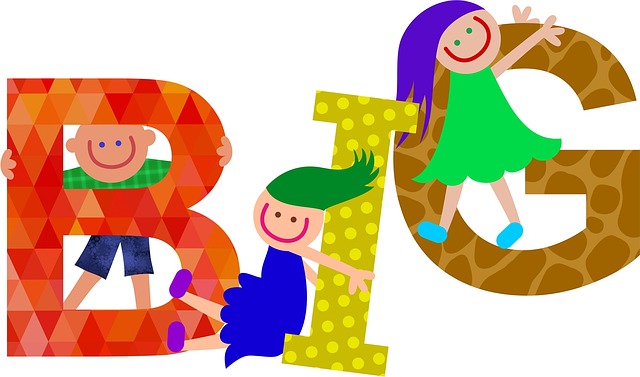
Whole language and the art of “making meaning”
I found myself stuck at home sick today, and unable to do pretty much anything other than lie flat on my back on the couch, I inevitably ended up trawling the internet and somehow found myself on Retrospective Miscue, a blog run by various members of the whole language community (including Yetta Goodman, wife/collaborator of Ken Goodman, the founder of whole language and one of the figures discussed in the article by Marilyn Jäger Adams I posted about recently.)
As I read through the posts, I couldn’t help but notice what seemed like a rather idiosyncratic connotation of the term “making meaning,” and it occurred to me that what scientists and, well, most educated adults understand by it is fundamentally different from what the whole-language crowd—or a certain segment thereof—means. The two groups are not simply having a theoretical debate; they’re living in two separate universes, one of which is based in reality and the other of which is not.
In the everyday world, I think most people would agree, making meaning involves decoding a text as it is actually written and integrating vocabulary, content, background knowledge, etc. in such a way that the reader comes away with an understanding of what the author is seeking to convey and is capable of generating a meaningful response. Before today, I more or less assumed that proponents of whole-language believed that teaching children to read via “authentic texts” and “literacy-building” activities would somehow magically result in their becoming able to accurately read decode the words on a page, as written, while simultaneously making use of all the other skills. (To be fair, some of them probably do believe this, but there’s another, more extreme contingent too.)
As I now realize, however, the goal of whole language is for the reader to construct a coherent, personally meaningful narrative, regardless of the exact words on the page. The symbols representing sounds are a mere suggestion (kind of like traffic lights in Naples); a student may interpret all of them as written, or he/she may not.
Rather than being viewed as a problem in need of correction, misreading words (a process referred to euphemistically as “miscueing”) is viewed as an exciting opportunity for the reader to construct his or her own meaning—and to practice examining how he or she constructs meaning, thus taking charge of the learning process—regardless of whether it truly corresponds to what is there. There is no need to impose “inauthentic” processes such as sounding unfamiliar words out in order to figure out what they actually are.
This, essentially, is the workaround for the inescapable problem that many children will not actually learn to decode effectively via whole language: rather than accept that the theory is faulty, its proponents seek to alter the terms of the debate by redefining reading itself.
Thus, it does not matter whether a student reads “pony” when the letters spell h-o-r-s-e because pony still makes sense and allows the reader to “construct a meaningful text.” Indeed a student who makes this error should be praised for “making meaning.” That it is not what the text actually says is unimportant.
One blog contributor described her work “remediating” a dyslexic twelve-year-old thus:
Over the last nine months, [she] and I have carved out space to help her revalue herself as a reader. Using rich texts [children’s picture books] such as Winnie Flies Again (1999) and The Napping House (1983), we began with miscue analysis and moved on to Retrospective Miscue Analysis (RMA). The idea, in the very beginning, was to prove to her that she was actually reading (she did not think she was). Her focus on fluency and decoding through various intervention programs obscured her vision of her own meaning making process as a reader.
We used RMA as a tool to demonstrate the remarkable high quality miscues she was making, and how high quality miscues are indicative of the incredible predictions her brain was making as she read. She came up with all kinds of excuses. I am just using the pictures. I memorized the book. Each time I quickly came to her defense, pointing out other amazing things she did, like her predictions that were either spot on, or far better than the author’s original story.
It would be hard not to feel sympathy for a girl caught in this type of situation. Having worked with several students who had taken a test a ridiculous number of times and scored poorly before coming to me, I’m well aware of the psychological roadblocks that can occur from ineffective teaching followed by repeated failure and frustration.
But while the approach outlined here might have improved the student’s confidence about reading, there’s nothing to suggest that it did anything to move her even remotely into the range of her seventh-grade peers, or that it gave her the skills to navigate anything beyond very basic texts.
More worryingly, helping students who are performing at a very low level to feel more confident via immense amounts of support can easily backfire, allowing them to assume that they understand much more than is in fact the case, and leading them to much bigger misunderstandings.
The irony is that advocates of this approach often frame it in terms of wanting students to become creative, critical thinkers, as opposed to automatons slavishly adherent to a single “right” way of thinking. The ultimate, long-term goal, of course, is to encourage students to become independent thinkers, but there is a rather clear line between a judicious sense of skepticism based on accumulated knowledge and life experience, and a childish, knee-jerk, “Well, why should I believe anything you say?” based on the shallow belief that everyone’s opinion is equally valid, and that no one knows more than anyone else.
Yet the belief that any form of direct instruction—or even the simple acknowledgment that specific combinations of letter make specific words and not others—risks turning children into nothing more than docile sheep, contributes to precisely the latter attitude.
And lest you think I am making a caricature out of this position, here is Yetta Goodman on the danger of insisting that young readers hew too closely to the letters on the page:
Teachers can send unintended messages that keep the reader focused on sub-skills and distract them from meaning making. When the teacher says, “Look at the word closely for the little words in the big words,” or “Check the beginning and ends of the words to make sure the sounds are right,” the reader interprets this as “Here’s the right way to say the word; say it my way and you’ll be fine.” Rather than taking a risk to make personal meaning, readers become very good at manipulating the teacher’s help. If they pause long enough and keep their eyes cast down, or look up with a pleading expression, they can get the teacher to say the word. If the reason for telling a word to a student is to get through a lesson, then that also becomes the pupil’s goal.
Undoubtedly, some students do become highly adept at getting information out of teachers this way, especially if they’ve learned that they will eventually be fed the answer. (A lot of my students were shocked at first when they asked me whether a particular option was correct, and I just shrugged and said, “I don’t know, you tell me.”)
And if teachers have had it drilled into them that their goal is to keep students constantly happy and excited about learning, then they are entirely likely to intercede with the answer when a child’s discomfort becomes too obvious. (Incidentally, international comparisons have shown that American teachers are more likely than teachers in countries with stronger school systems to turn difficult conceptual problems into simpler procedural ones, depriving students of the very important—but potentially unpleasant—experience of struggling through them.)
Several distinct issues are conflated here, though: having children look for little words in big words, or telling them check the beginning of a word to make sure it begins with the same consonant they are saying, and directly telling a child what a word is, are in two entirely different camps. The former two are tools (albeit three-cueing tools of questionable effectiveness) that students can use to figure things out own their own; the latter is intended to remove any discomfort by simply providing the answer. (Encouraging students to sound out words is of course strictly forbidden—this is referred to only as “an unintentionally taught strategy.”) To lump these approaches together and then criticize them for impeding students’ ability to “make personal meaning” (i.e., make things up) is really astounding.
Moreover, the language here is unintentionally revealing about the whole-language worldview: if reading what a word actually says is framed as “my [the teacher’s] way,” the terms of the discussion are moved from the general/social (words are always written with the same letters so that everyone can recognize them) to the personal (the word is x because this particular teacher says so).
It is as if the only conception of reading imaginable were a selfish one. Children are portrayed as wanting to manipulate teachers into providing answers (understandable if they have received little to no direct instruction), and there is no acknowledgment of the fact that teachers insist that h-o-r-s-e spells horse not because they have personally decided that is the case, but rather because the entire English-speaking world has a well-established agreement about it. Sometimes there is a right answer, and to lead children to believe otherwise is grossly unfair in the long term.
Of course, young children lack the perspective to grasp this context, and so it is the educational community’s job to understand it for them. In Goodman’s view, however, a teacher does not serve as a conduit between a child and the larger world; rather, one personal interpretation is pitted against another.
But learning to read means becoming part of a literate community—and community membership is by definition based on common understandings. A child who is explicitly taught to reject those understandings will thus be unable to participate in it effectively (and, worse, may actively attack it for refusing to accede to his or her individual and erroneous insistences). Teachers who fail to grasp that their role is to help children become members of a group that extends far beyond themselves, and far beyond the teacher even, are doing students a very grave disservice.
In addition to that, the message that gets sent is that other people’s words—indeed, external reality—do not really matter, only what makes sense to the individual reader. If ever there were a recipe for producing a society full of individuals hellbent on disregarding information inconsistent with their pre-existing narratives, I think it’s pretty fair to say that this would be it.



